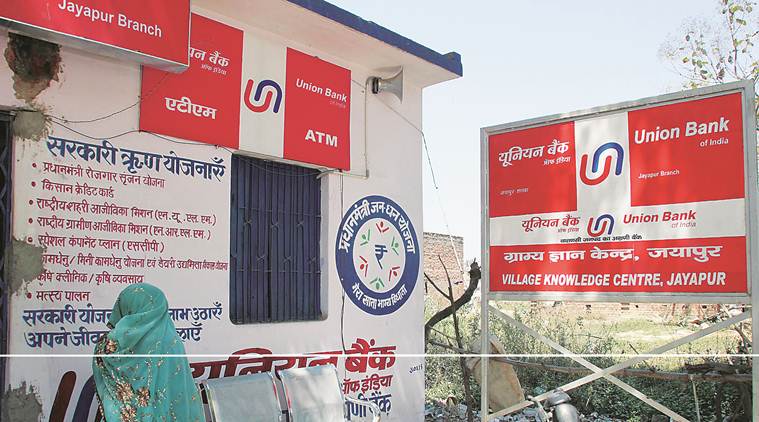
That farmers are in dire straits is well-known. So is the fact that the roots of it lies in agri-produce prices being consistently low, especially post demonetisation.
That being the case, it is interesting that none of the palliatives currently under debate — whether loan waivers or direct income transfers to farmers — are addressing this core issue of deceleration, if not deflation, in crop realisations. That, in turn, has primarily to do with the lack of liquidity and sentiment in produce markets. The obvious solution, then, would be measured to help augment liquidity and lift sentiment. One can suggest two of them, both of which have no fiscal implications, unlike loan waiver and income support.
The first is an omnibus legislation giving farmers the right to sell their produce to anybody, anywhere and at any time. This requires scrapping provisions under the Essential Commodities Act (ECA) as well as state-level Agriculture Produce Marketing Committee (APMC) laws, pertaining to restrictions on sale, stocking, domestic movement and export of farm produce. An explicit legislative commitment that there will be no ban on exports of onion, potato, pulses, sugar or milk powder and no limits on how much stocks a trader or processor can hold at any given time — we have seen all these being clamped at the slightest instance of prices rising — can do wonders for market sentiment.
There is a solid reason to justify the removal of the above controls. It relates to supply response — the ability of farmers to increase production when prices go up. That has improved vastly today, compared to the times when the supply curve in most crops was near vertical: No matter the price, the quantity harvested and sold practically remained the same (https://bit.ly/2laEOrZ). But now, if retail prices of onions were to cross Rs 30/kg, we can trust farmers to plant more area under the bulb and consumers will not have to wait too long for rates to ease. Stockholding limits or export curbs, on the other hand, can cause enduring damage by discouraging organised players from investing in procurement, grading, warehousing, cold storage and transport infrastructure. The ultimate sufferer is the farmer.
The coming Union Budget — whether interim or full-fledged — can provide a crisis-driven opportunity to grant farmers the right to sell to anyone and anywhere (which the APMC laws don’t allow) and traders, processors and exporters the freedom to buy, stock and ship any produce without any ECA-imposed limits. Any going back to controls would be permitted only under exceptional circumstances (drought, natural calamities or war) and with Parliament approval, as opposed to executive order or ministry notifications in “public interest”.
The second measure that is relevant in today’s rural realities is to bring back cash in produce trade at mandis. The 2017-18 Union Budget had amended section 40A (3) of the Income Tax (IT) Act, disallowing cash payment above Rs 10,000 made to any person in a single day. Any payment exceeding this threshold shall not be allowed as deduction in computation of income from profits and gains of business.
The above provision has been used by traders to deny farmers payment in cash beyond Rs 10,000 for their crop, even after supply of currency being restored to pre-demonetisation levels and no ostensible shortage of banknotes. The significant point to note is that the Section 40A (3) provisions aren’t applicable in the case of payments made for purchase of agricultural, horticultural, animal husbandry or forest produce to cultivators/producers of such produce.
Furthermore, a Finance Ministry clarification issued on November 3, 2017 stated that the newly introduced section 269ST of the IT Act prohibited receipt of payment in cash by any person only in respect of amounts exceeding Rs 2 lakh per day.
In other words, cash sale of produce by a farmer to a trader for an amount below Rs 2 lakh will not “result in any disallowance of expenditure under section 40A (3) of the Act in the case of trader” or “attract prohibition under section 269ST of the Act in the case of the cultivator”. Moreover, “the provisions relating to quoting of PAN (permanent account number) or furnishing of Form No.60 under rule 114B of the IT Rules do not apply to the sale transactions of Rs 2 lakh or less”.
It is a mystery why traders are claiming that they cannot pay individual farmers more than Rs 10,000 in cash for any transaction, when the IT Act/rules clearly permit the latter to receive such money up to Rs 2 lakh. The so-called Rs 10,000 cash payment limit obviously allows unscrupulous traders to play with farmers’ money. In the pre-demonetisation period, they had no choice, but to pay for produce fully in cash. Now, they merely shell out Rs 10,000 and delay payment of the balance amount to farmers by issuing cheques that take their own time to clear. All this, when demonetisation is supposedly behind us!
A single statement in the Budget — farmers would have the right to be paid up to Rs 2 lakh a day in cash for any sale backed by a bhugtan patra (payment slip) — will help bring back liquidity in produce markets. And when cash starts circulating freely in the mandis again, it will revive rural spending — and sentiment.